“Beyond these hills, there were other forests and the great peaks of the Carpates themselves. We saw them on our right and on our left, the afternoon sun illuminating their already splendid tones – dark blue and purple in the hollow of the high rocks, green and brown where the grass slightly covered the stone, then it was an endless prospect of cut and pointed rocks that were lost in the distant, where the snowy summits were rising.”
Jonathan Harker is marveling in front of the landscapes that run in front of him, while he is on his way to meet Count Dracula. The rest of the story, you surely know her: the young Harker becomes a prisoner of a blood-skinned creature. However, he manages to get away with it, while the count chains the victims. Jonathan and Mina, his fiancée, will try to defeat the vampire by sinking a stake in his heart.
If the legend is born from the fertile imagination of an Irish author, the famous landscapes described by the Harker, our protagonist and guide, exist beautifully. These are those of Transylvania, etymologically “beyond forests”: a mountainous region located in the Romanian West more than 2,300 kilometers from the France .
But what is really, in this beyond? A rich folklore, nourished by mixtures of religious and pagan beliefs. Disputed in turn to the role of the Mongols, the Saxons and the Turkish Ottomans, the Transylvania fully reflects this incredible population brewing.
Bram Stoker never set foot in Transylvania to write his famous Dracula in 1897. First, he is impregnated with his Ireland Native, swept by famine and cholera, to create a morbid atmosphere. Then he began a careful research work on the Romanian region, and his customs and customs. This is how the prolific writer saw in Transylvania an ideal background to develop his intrigue.
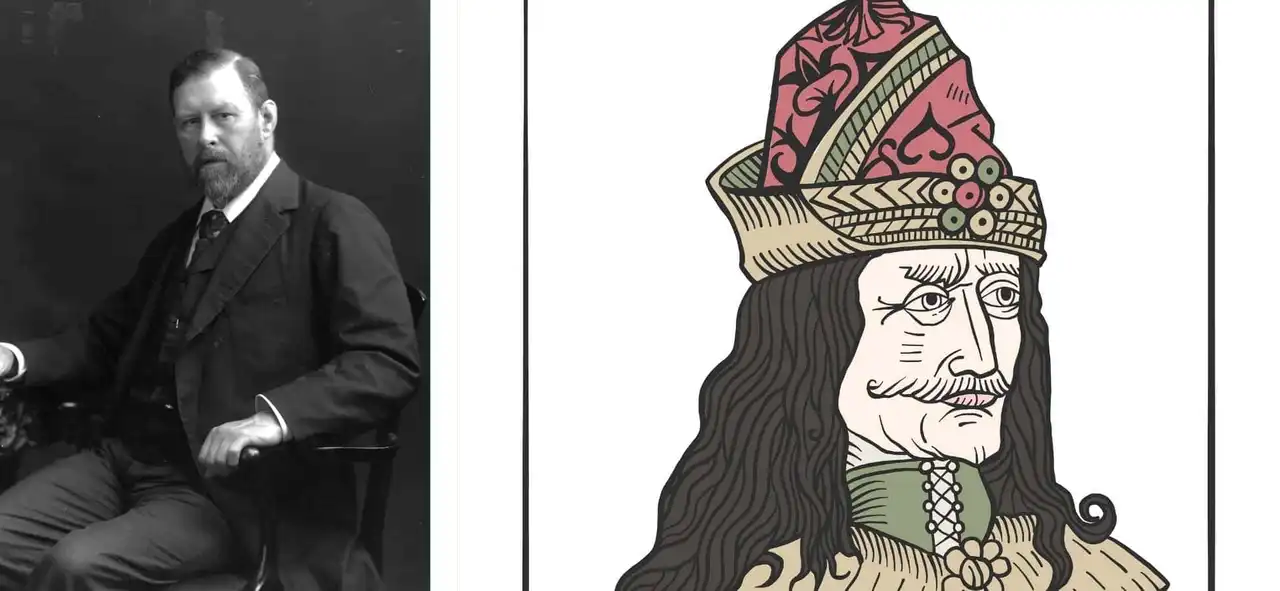
Find on the left: Bram Stoker in Bistrita-Nasaud A representation of Vlad III L’Empaleur Find – Photo credits: Wikipedia – NY Times Shutterstock – TPYXA Illustration
Also, Stoker applied to piocher in local history to customize his blood creature. Indeed, the character of Dracula is inspired by the tyrant Vlad III the Empaler, whose nickname refers to his monstrous torture techniques. By choosing Transylvania as a backdrop, Stoker has a solid material to create an exciting novel, but also a myth, which will make this Romanian region popular that we invite you to discover!
Meeting with our guide
His name is Jonathan Harker, and he is a young notary cleric from London. In order to conclude a real estate sale with a mysterious foreign count, Harker starts a trip to Transylvania, in the heart of the Carpates mountain range. Thus, the trip is as exotic as it is exceptional for Harker, at a time when high-speed aircraft and trains did not exist.
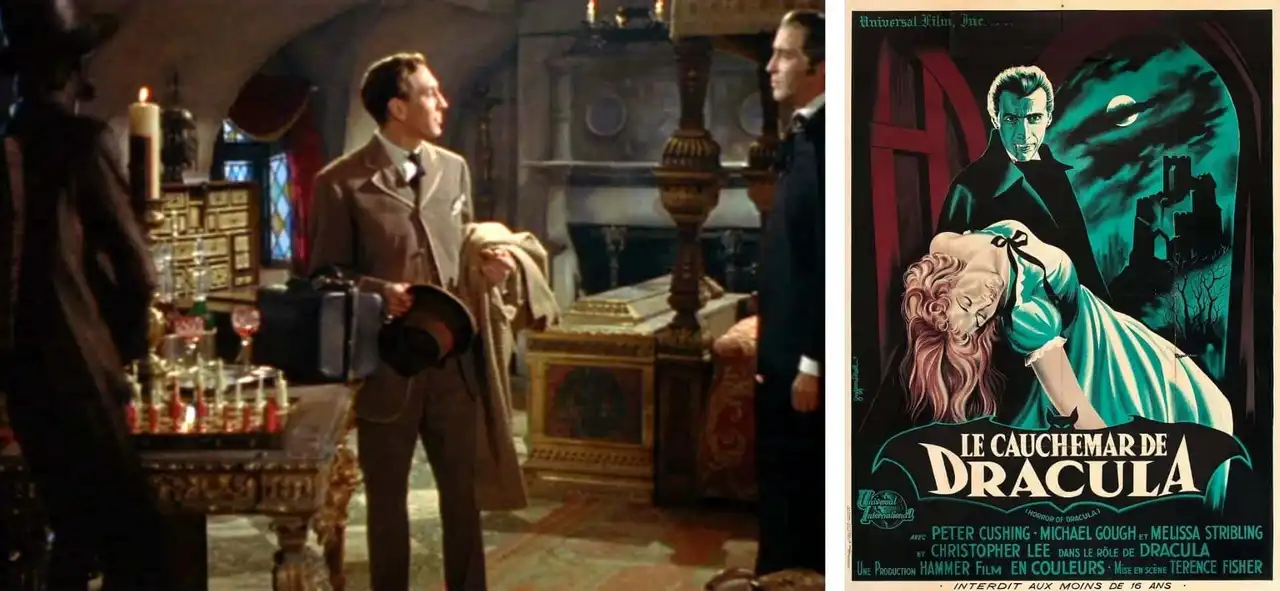
Dracula and Jonathan Harker also conquered cinema, as in Dracula's Nightmar (1958) – Photo credits: Flickr – Super Furry Librarian Diversity Corner
The road is long, so the route allows Harker not to miss anything. He therefore decides to tell each of the steps in a notebook, which he intends to show to Mina, his fiancée. This is the first part of the novel Dracula by Bram Stoker, which serves us here as a guide through this area filled with folklore.
And upon arrival in Transylvania, our guide notes his first impressions: “It seems that all the superstitions of the world are found in the Carpathians, and do not fail to make the popular imagination stir. If so, my stay may be of the most interesting.” If he knew...
Cluj-Napoca, in pursuit of Dracula
“Having left Budapest without too much delay, we arrived at Klausenburgh in the evening. I stopped there to spend the night at the Royal Hotel.”
Our first step, and that of Jonathan Harker, will start at Klausenburg, now known as Cluj-Napoca. There, Harker goes to the Royal Hotel, where he tastes (in the proper sense of the term) for the first time at the local culture. He's used a mamaliga, corn flour porridge, a mamaliga impletata , stuffed eggplant dish, and paprika hendl , a soup that he thinks to be at the origin of his nightmares the next night.
Also, he exchanges his first words in German with the aubergists, who bring forth his anxiety. Indeed, their far too serious looks surely hide something...
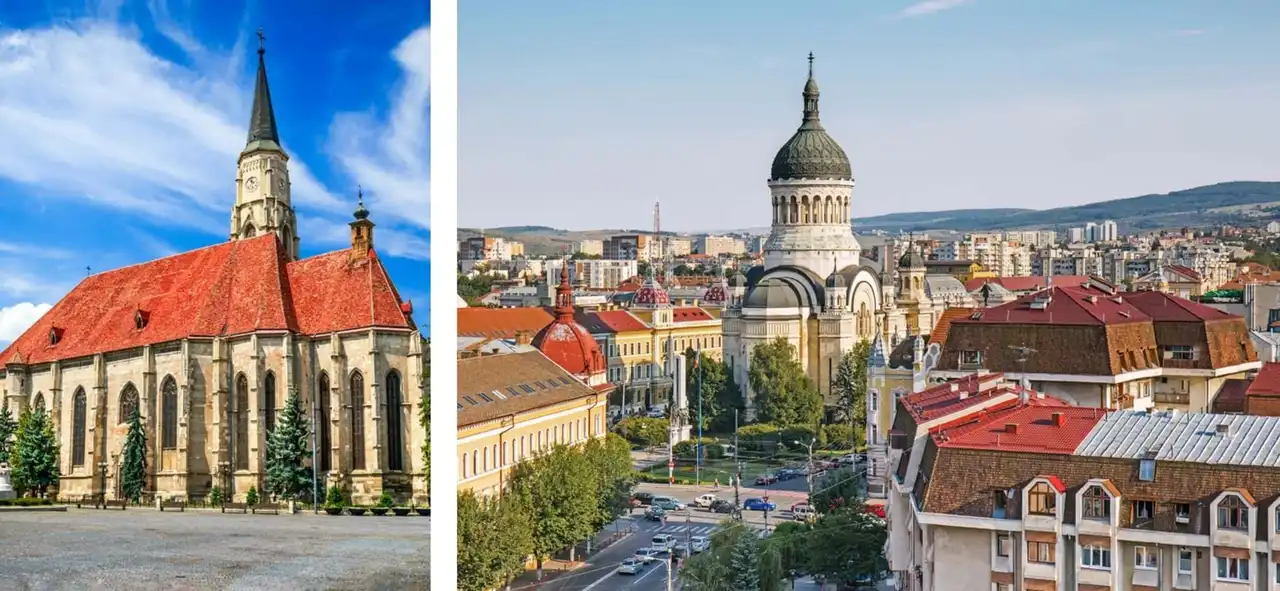
Cluj-Napoca is a beautiful city, with beautiful religious monuments – Photo credits: Shutterstock – cge2010
However, contemporary Cluj-Napoca does not clearly reflect the sinister atmosphere described by Harker at the beginning of his newspaper. Indeed, the second largest city in Romania breathes life. Student life, cultural life, and nightlife, mainly. It is in Cluj-Napoca, for example, that you can discover the wonderful botanical garden Alexandru Borza where more than 10,000 plants live.
But reassure yourself, Dracula is never far! You will already be able to dive into the Transylvania for a long time at Romulus Vuia Park, where the traditional houses of peasants, mills, and antique shops are located. Then it is enough to stroll through the streets of the town to discover many religious vestiges that strangely remind the piety of the inhabitants that Harker meets on his way.
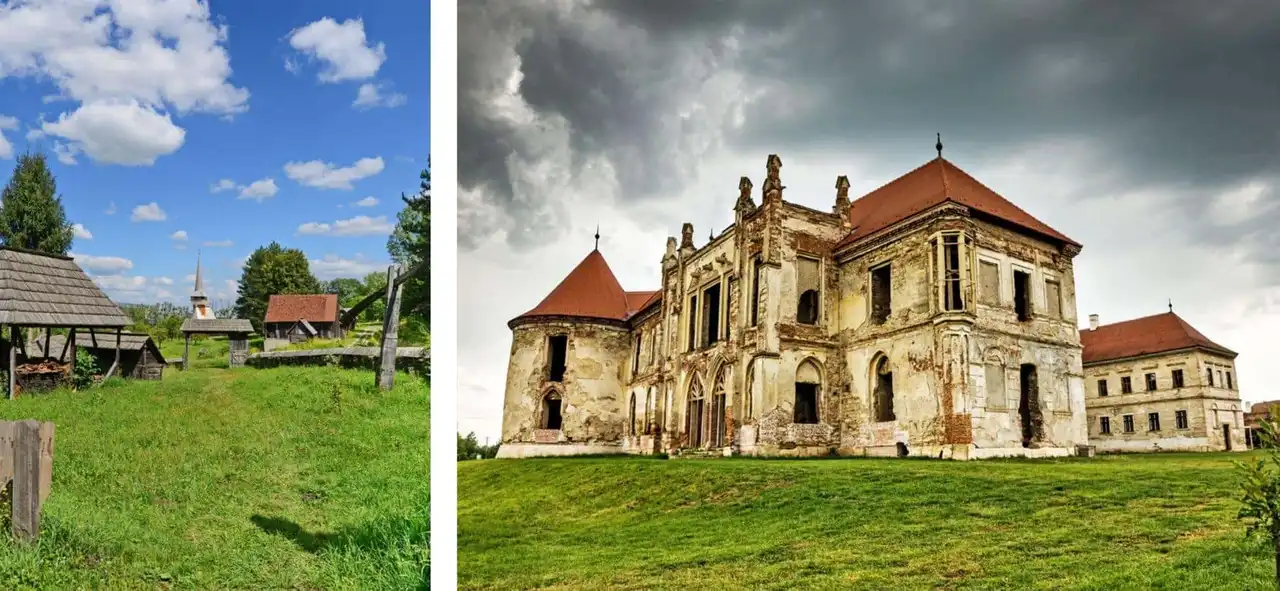
Find on the left: Romulus Nuia Park on the right: Banffy Castle Photo credits: Shutterstock – antal tiberiu alexandru
And the Royal Hotel in question? You will then find its equivalent to the Hotel Transylvania, a middle-aged establishment located in the oldest street in Cluj-Napoca: Ferdinand Street. Finally, if you want to dine in the way of Harker, several restaurants will offer the dishes it swallows during its first transylvaine night. Free to accompany them with a glass of local water, the Palinka...
The Bánffy de Bonțida Castle and the Nicula Monastery are important steps in this literary pilgrimage from the city centre to the North. Beyond that, the visit of these two buildings, dating from the 15th and 17th centuries respectively, allows to put a little more to the perfume on the transylvan heritage and its cultural syncretism.
Bistrița, the first chills
“My research, however, taught me that Bistrița where, as Count Dracula told me, I should take care of it, was an old little town, very well known.”
After Cluj-Napoca, Jonathan Harker went to Bistrița, where he would spend a night. In his log, Harker talks about the rich historical past of Bistrița, but also about the strong Orthodox beliefs that inspire the city. He mentions the signs of the villagers’ crosses, fearing the devil, or rather the sinister creature awaiting Harker’s arrival with impatience.
In addition, it is in this northern city of Transylvania that our guide-protagonist will receive the first message of the creature in question, Count Dracula, therefore, welcoming him to the Carpathians.
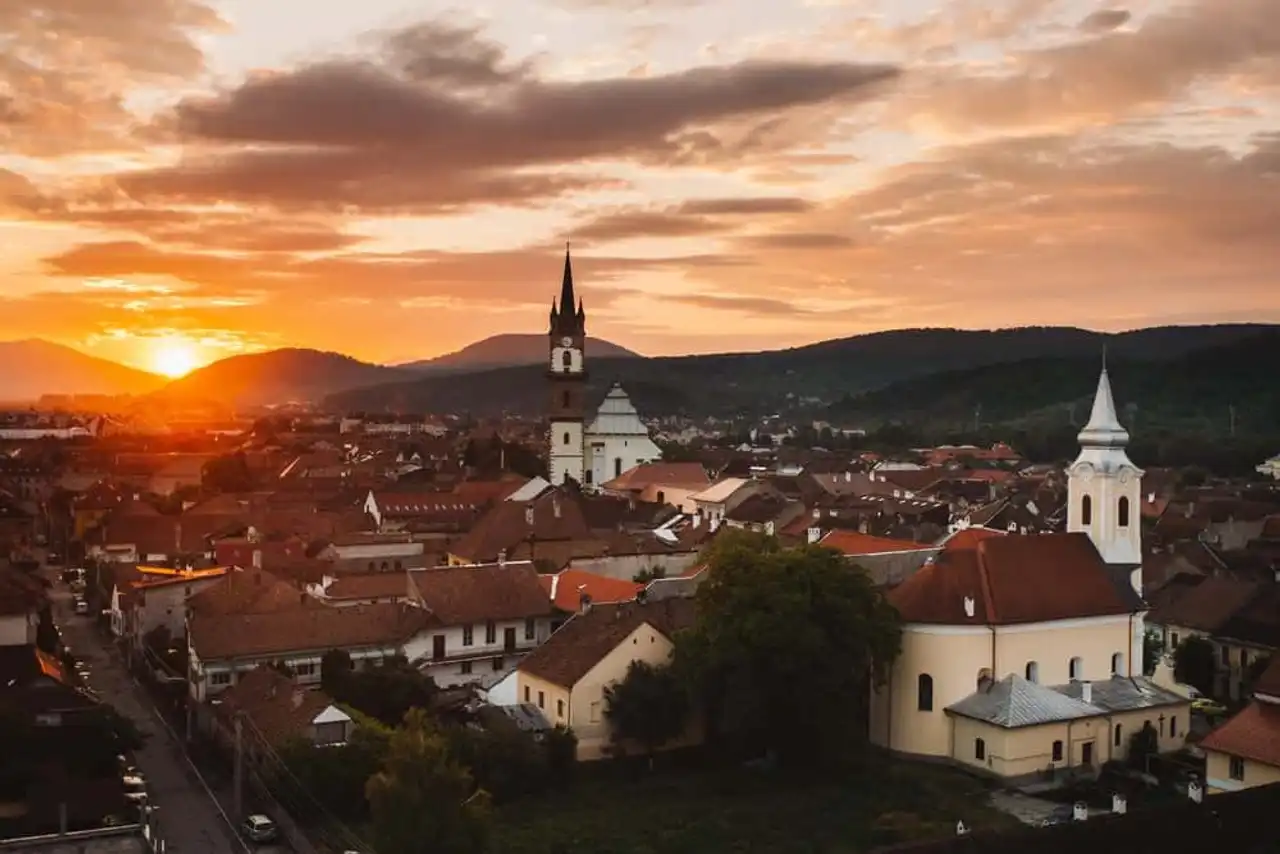
Bistrita under the sunset – Photo credit: Shutterstock – antal tiberiu
Thus, this second step in Bistrița allows a little more in-depth into the supernatural environment as Bram Stoker imagined. For this ancient Saxon town, at 1h30 drive from Cluj-Napoca, seems to have stopped in another era! Already there are Gothic architecture establishments like the highest tower in Romania, an evangelical church dating from the 14th century.
Also, you will walk in small narrow streets, punctuated by remains of fortifications. In the heart of this archaic city, your path may cross a splendid synagogue of the 19th century, the Maison de l’Orfèvre and the very old tower of the Tonneliers, which dates back to it of the 15th century. Finally, and although it is not really a recommendation of Harker himself: the Bistrița market is a must during a city visit!
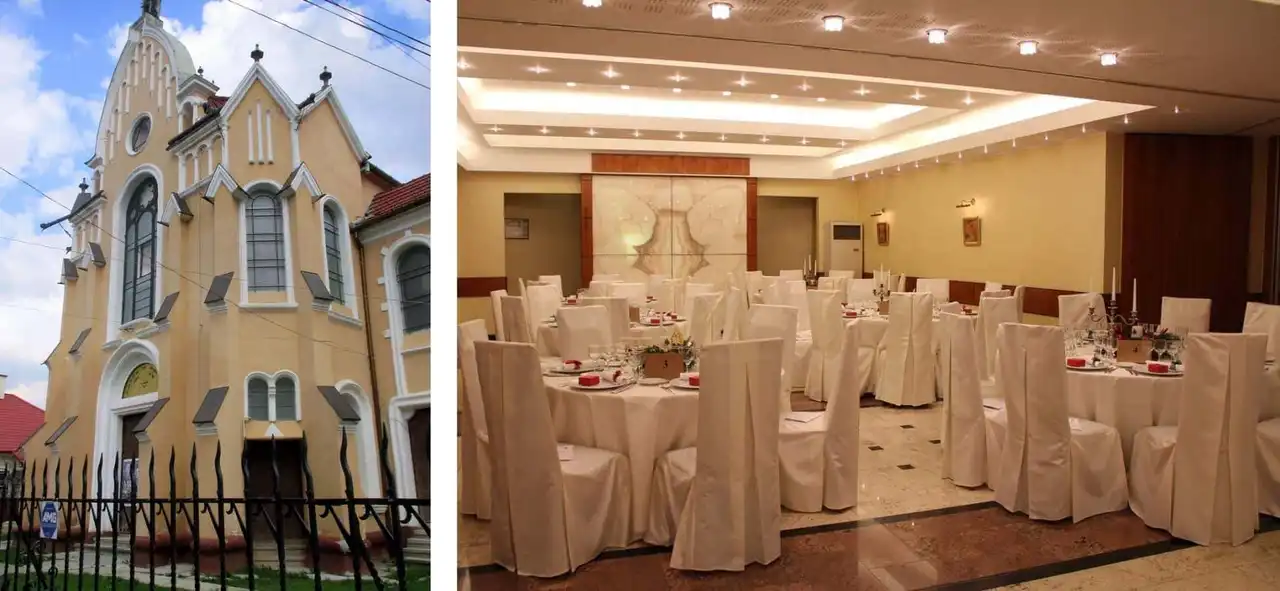
Find on the left: Synagogue of Bistrita On the right: the famous Jonathan Harker Lounge at the Coroana Hotel in Aur Find - Photo credits: Flickr -Bogdan Pop Booking
Foretoldly, local hotels can offer you to continue the Dracula experience at nightfall. For example, the Coroana Hotel in Aur (“Golden Crown” in the novel) claims to be the heir to the hostel where Harker spent his only and unique in the city.
For example, the place proposes to restore you to the Jonathan Harker lounge while enjoying the dishes he mentions in his newspaper. On the menu: brigan steak, Doré Mediasch wine and some crucifixes.
We sink into the Carpates...
“When the sun began to decline, we saw, here and there, in the anfractuosities of the rocks, sparkling a waterfall.”
In the welcome missive received by Jonathan Harker in Bistrița, Count Dracula invited him to cross a part of the Carpathians, a mountainous group among the largest in Europe.
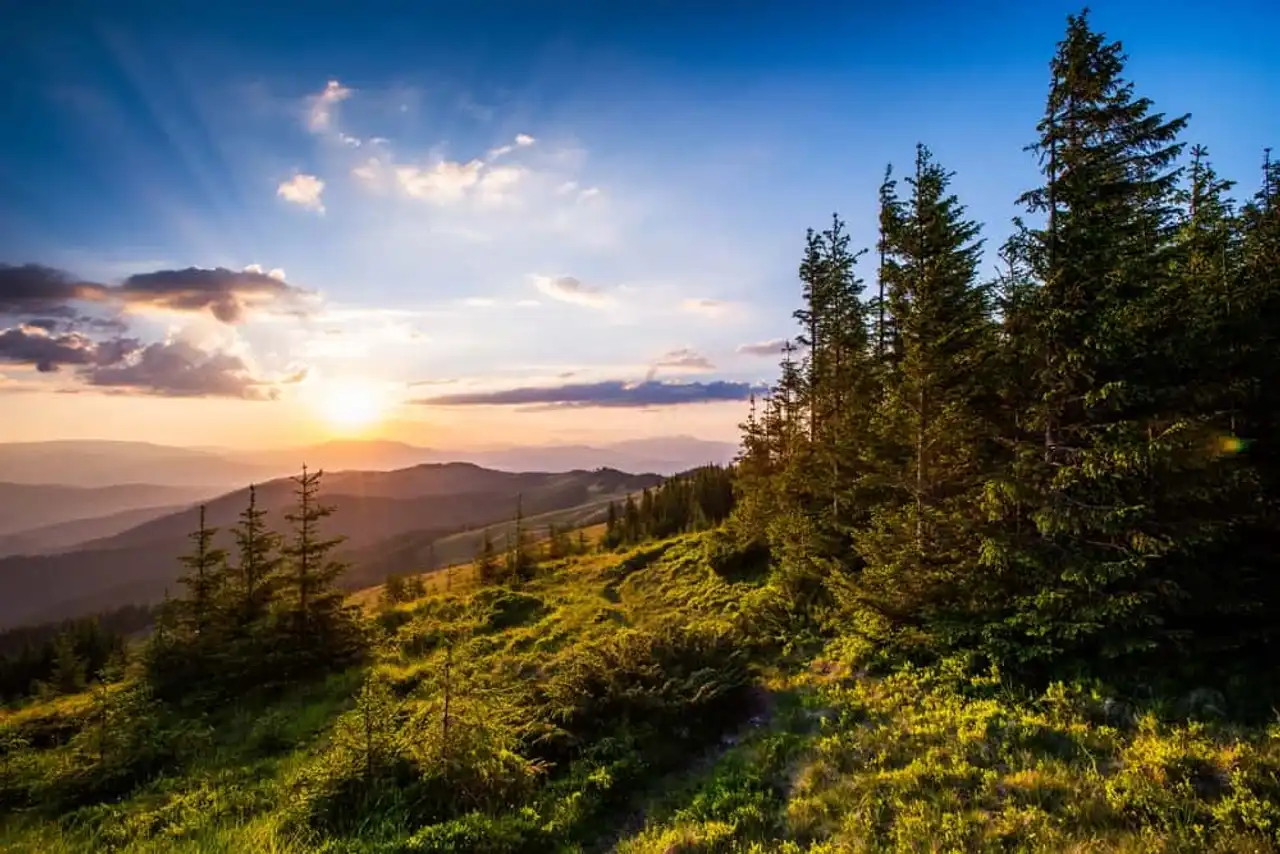
The Capartes, a breathtaking massif – Photo credit: Shutterstock – Standret
Peregrines of his characters in Transylvania, Stoker left nothing to chance. From his small library at the end of England, he is inspired by Travel to the Valachie and Moldova of William Wilkinson (1820) to master places he does not know.
Thus, he decided to place the castle of Dracula in the pass of Tihuța, named under his Hungarian name “Borgo” in the novel. And if you look at the Carpates in your turn, you will see that the place seems perfectly adequate to plant an old castle surrounded by menacing fir trees. But at the time, this mountain road trip is made in calèche version. If the car ride today takes a good time from Bistrița, it will be much longer for Harker...
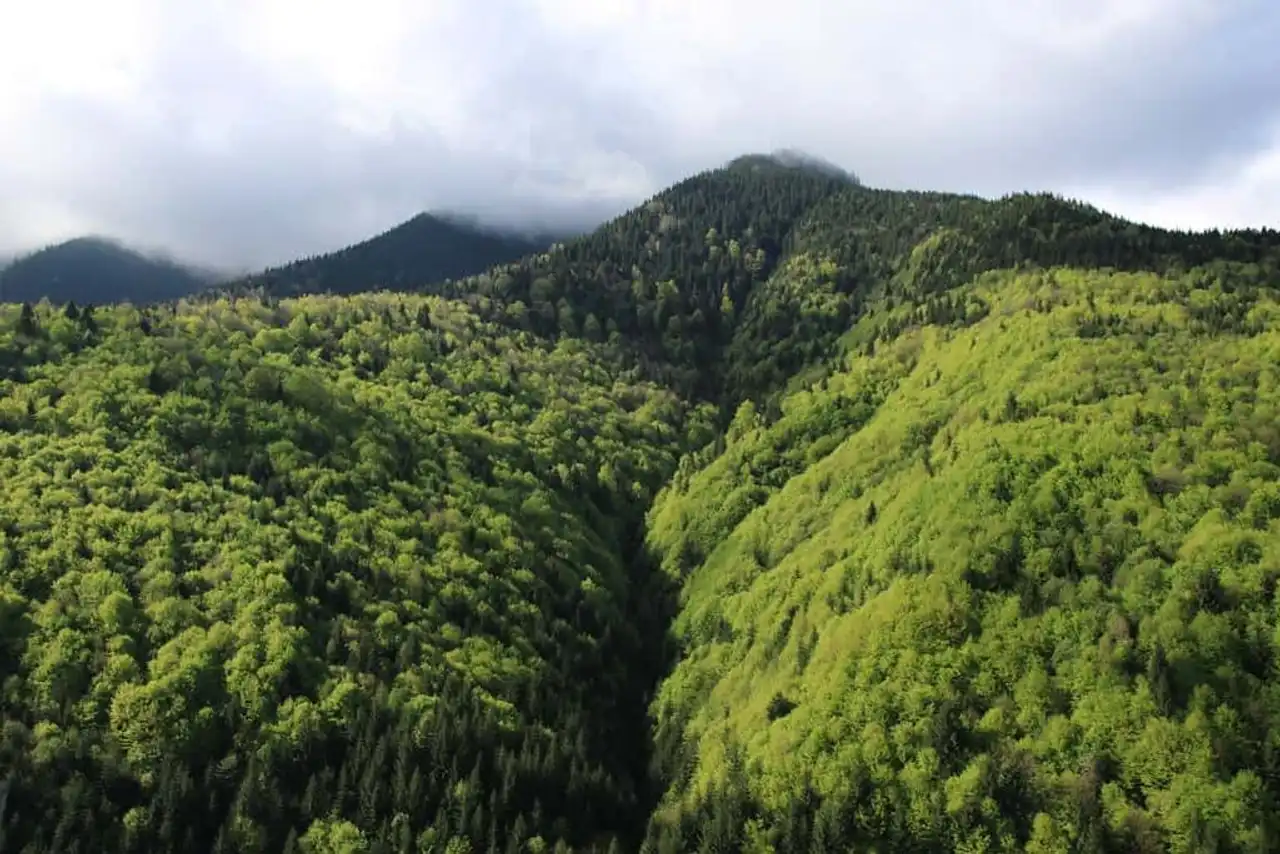
According to the work of Bram Stoker, it is in this forest pass, the pass of Tihuța, that hides the mythical castle... – Photo credit: Flickr – Cristian Bortes
So it is there, in the heart of the Bârgāului mountains and at 1,200 metres above sea level, that we get closer to the myth. After the success of the novel, hotels built a castle in the village of Piatra Fântânele, with reference to Dracula, where a statue of Bram Stoker sits.
There you can restore, stay, enjoy an unspoilt view of the Carpates and even discover a (fals) cemetery. Because the hosts will enjoy making the experience as fun and scary (please keep a garlic clove on you!).
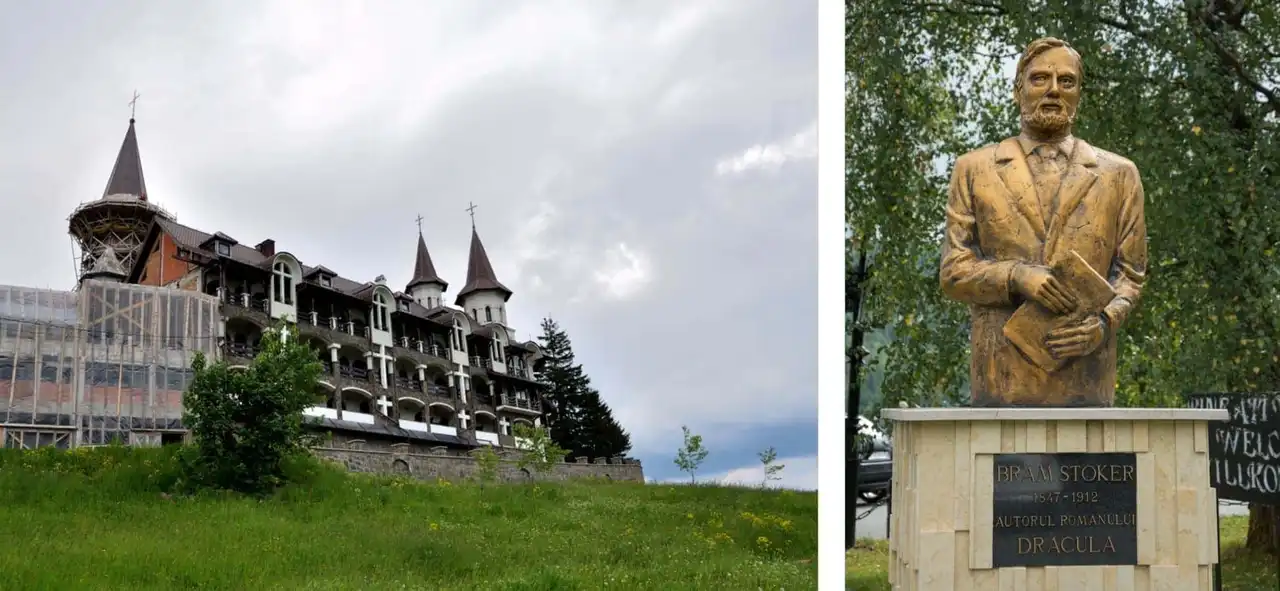
Find on the left: the monastery of Piatra Fântânele Find on the right: the statue of Bram Stoker – Photo credits: Shutterstock – FotoAcord artfotoxyz
A few kilometers from the theme hotel castle you will find a monastery built to hunt evil spirits. Because you have to attract tourists, yes, but surely not the wrong eye. You can therefore visit this monastery renowned for its labyrinthic architecture and its 31 metre high cross.
In addition, and if you spend the night in the corner, you can admire it in the middle of the night because it even has LED lighting.
Brașov, welcome to the castle!
“On the other hand, the walls of my castle fall into ruins, the shadows cross it in large numbers and the winds blow from everywhere. I love shadows and all that is obscure, nothing pleases me so much as being alone with my thoughts.”
If in the work of Bram Stoker, the castle of Dracula is located around the pass of Tihuța, there is a real castle in Brașov that resembles the descriptions of the novel. This third stage takes us to Castelul Bran (“Château de Bran”), located in the city of Brașov, at 5 hours’ drive from the pass of Tihuța.
Qui-plus-est, Brașov is the old Valachie where Vlad III the Empaleur reigned, the man who inspired Bram Stoker to create his character from Dracula, if you have followed well. We'll come back to this awful character later...
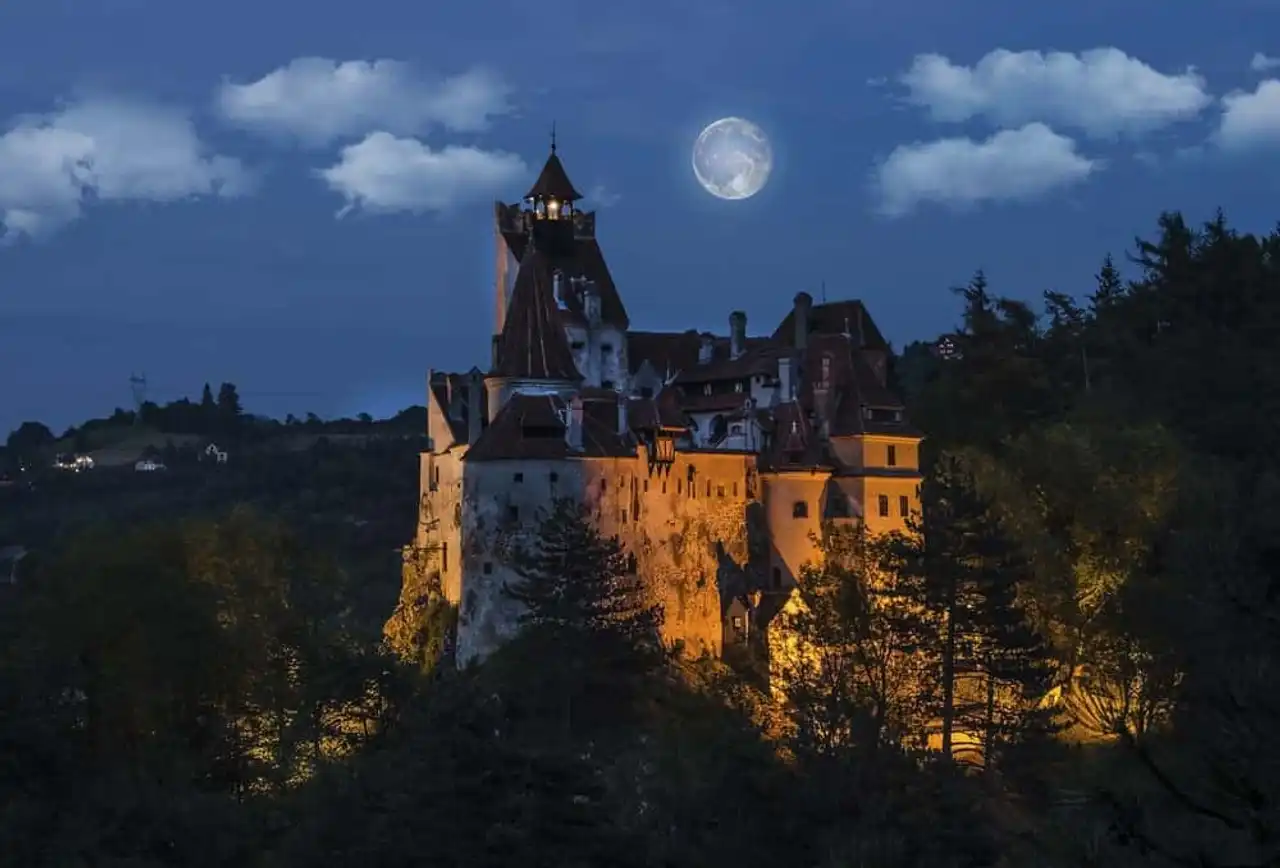
Fully enter the legend at the Château de Bran... – Photo credit: Shutterstock – Marianna Ianovska
However, Stoker also inspired his own experience by making his protagonist a prisoner of a castle. Indeed, the author has worked for several years as a legal employee of the castle Dublin and found this work particularly “claustrophobic”. The legend tells us that there were regularly nightmares, and for cause: Dublin Castle is built on piles of human bones.
But let's go back to our adventures in Transylvania. What do we find today in Bran Castle? Perched from its cliff at the entrance of the Bran-Rucăr Pass, the Gothic fortress built between 1377 and 1388 on the orders of the King of Hungary bears witness to the tumultuous past of the region. Reception rooms for another time, medium-age furniture, torture room, narrow corridors and other mazes... The castle is an invitation to become Jonathan Harker, to be frightened, to imagine himself a prisoner of a monster who will come to suck our blood in the middle of the night.
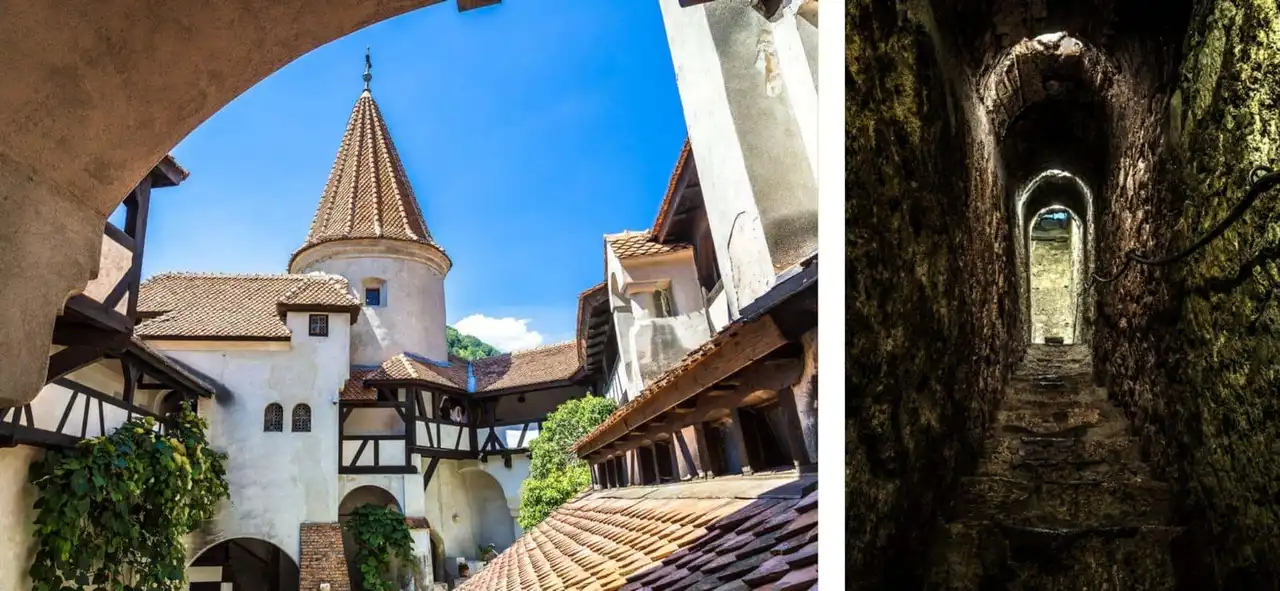
Find it on the left: the castle yard To the right: secret passage – Photo credits: Shutterstock – S-F |MISUMI
Bran Castle also testifies to a royal past, since the latter was the residence of the famous Habsburg and the royal family of Romania. Queen Marie would have spent a lot of time there.
Sighișoara, the roots of evil
“Yes, the count was lying there, but it seemed half rejuvenated, for his white hair, his white moustache were now of an iron gray; the cheeks were more full and some redness appeared under the paleness of the skin. As for the lips, they were more vermelia than ever, for drops of fresh blood came out of the corners of the mouth, flowing on the chin and neck. The sniffy and shiny eyes were disappearing in the swollen face. It was said that this horrible creature was simply stained with blood.”
The last stage of our journey takes us a hundred kilometers from Brașov, in the city Sighișoara. There, reality catches up with fiction: for Vlad III the Employer was born there in 1431. His father Vlad Dracul, who reigned in Valachia (the neighbouring Transylvania region) would have lived in the town Sighișoara with his wife.
Thus, we will leave Harker aside, to discover the city where the torturer was born that inspired one of the scariest creatures of literature.
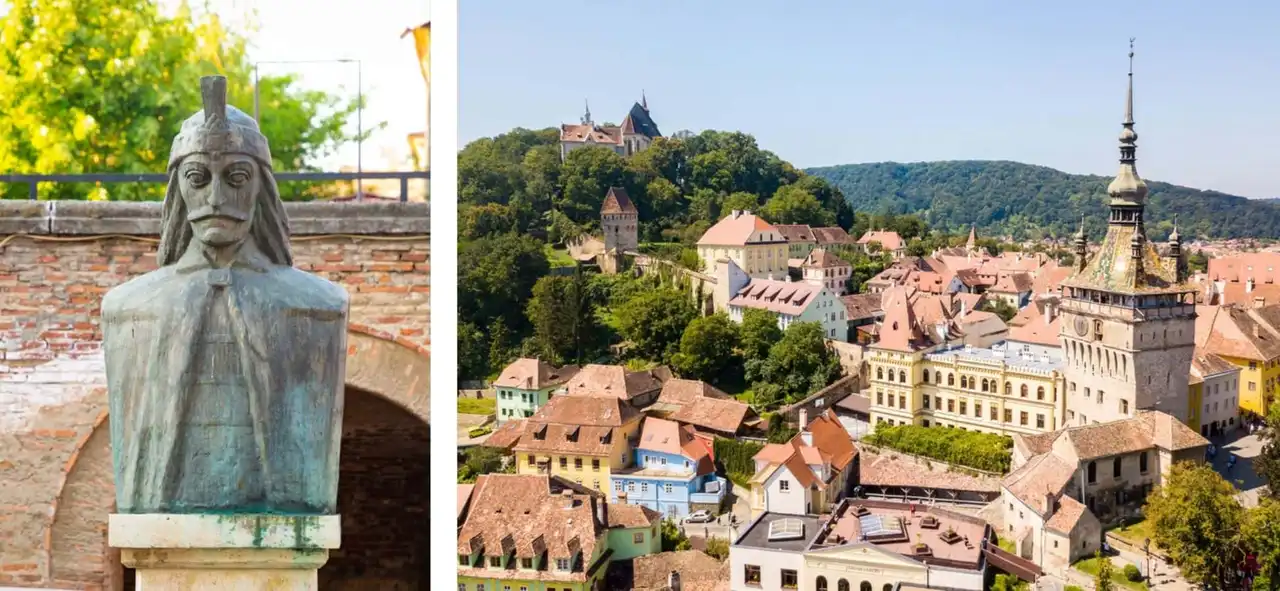
It is here in Sighișoara that the crazy story of Vlad III begins – Photo credits: Shutterstock – Tatiana Dyuvbanova
First of all, nothing suggests that the city had been the cradle of a executioner. Sighișoara is indeed a fortified citadel, whose medieval centre is listed on the UNESCO world heritage. So if you start a little walk in the centre, you will cross narrow, bevelled streets and especially colourful.
You will also discover its landmark: the Tour de l’Horloge, where, from its summit, you can admire the panorama. Finally, you will have to take the wooden stairs, “ scara scolarilor “(or stairs of schoolchildren). They are a real time machine! 175 steps later, you will fall on the Gothic Church of Saint Nicholas, which contains some paintings and relics of the Renaissance.
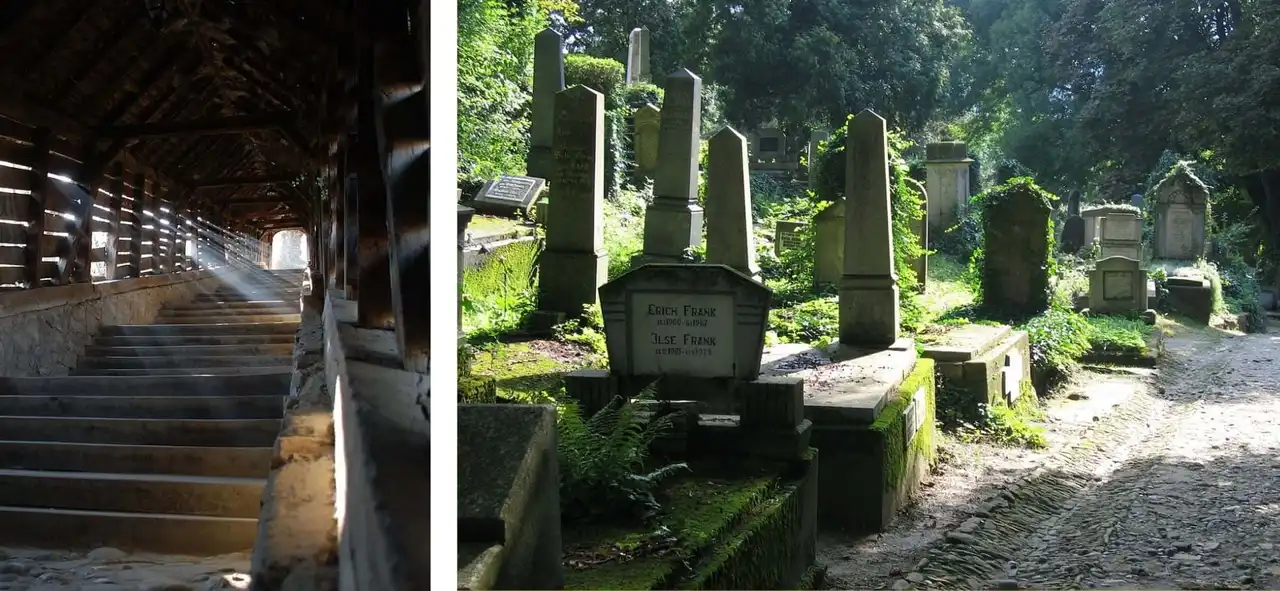
Sighișoara offers a true spatio-temporal leap...and a dose of shock – Photo credits: Wikipedia – Radu Ana Maria
Behind the religious building, there is an old German cemetery. You were looking for chills, weren't you? You're served. In this cemetery of another age, the foam and the edges now cover the tombstones. Although austere and friche, the latter is worth a moment. But you will not find traces of Vlad III...
For it is on your way down to the centre that you will find the traces of man at the origin of the myth. Indeed, you will fall on Vlad Dracul's house. No cracks, otherwise a plaque written in Romanian. And if the heart tells you, you can visit two rooms for 10 Romanian Leu (about 2€), where the spirit of Vlad will be a joy to scare you. Unless an actor is involved in this case...
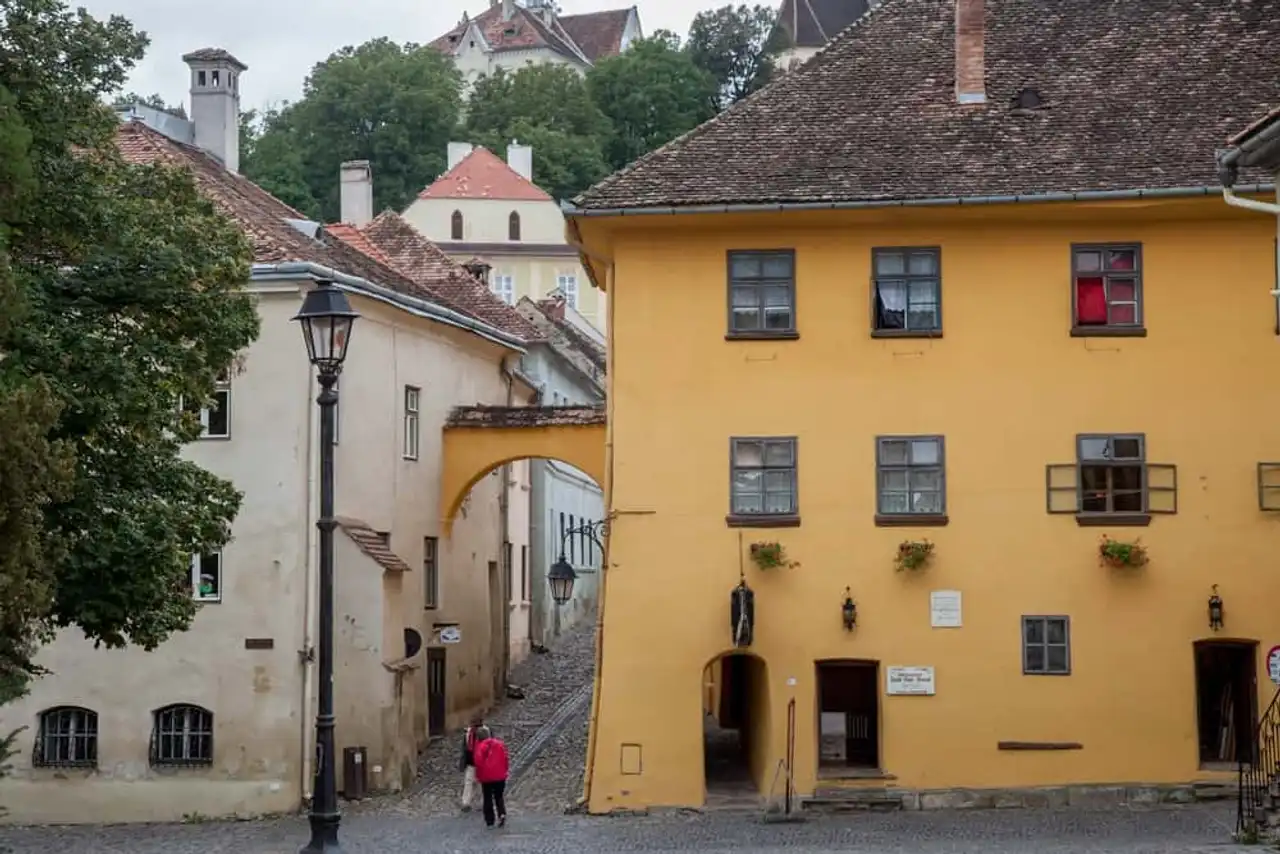
The house of Vlad III – Photo credit: Shutterstock – BalkansCat
Beyond Dracula
“We are in Transylvania, and Transylvania is not England. Our customs and customs are not yours, and there will be many things that will seem unusual to you.”
Our journey into the enchanting Transylvania is now coming to an end. If you want to continue your quest for vampires, then we give you an appointment in the Romanian capital, Bucharest , where is the Dracula Museum. The latter will allow you to perfect your knowledge of the region, but also of the myth. For let us not forget: Dracula, his castle, and his Carpathians also inspired the 7th Art many and many times!
However, in the event that you have squeezed your thirst to learn more about the creature of Bram Stoker, then we invite you to discover new facets of this wonderful region that is Transylvania. Because this one will have even more to offer you: castles by thousands, big lakes, ski resorts in winter, fabulous hiking in summer...
But take a stake in your suitcase and some garlic pods in your pocket, we never know.
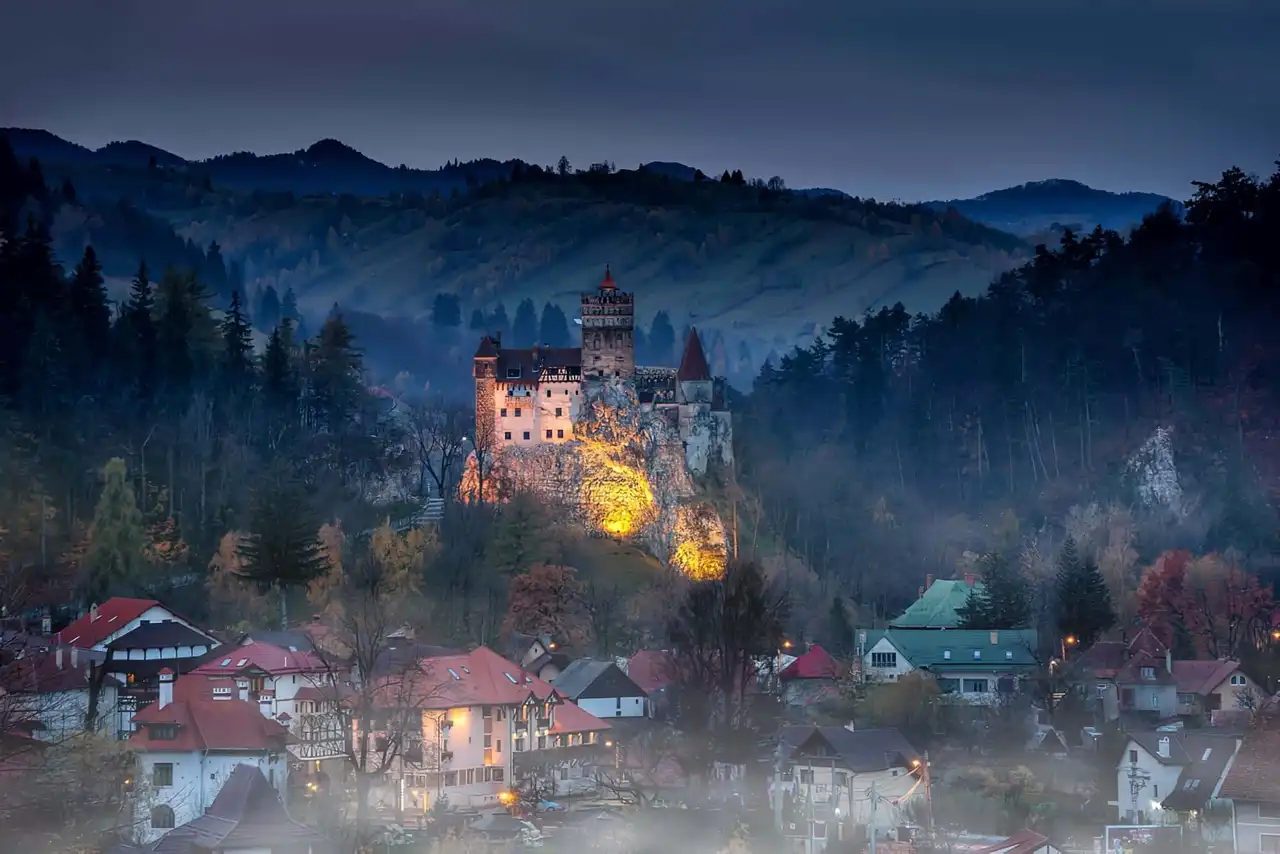




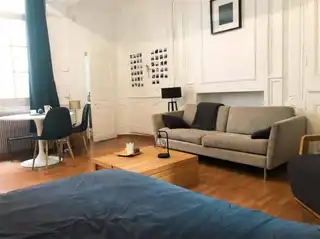
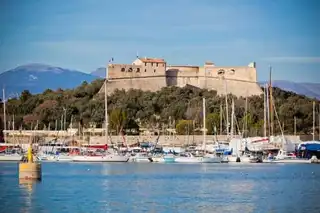
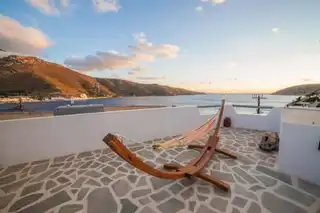
Loading comments ...